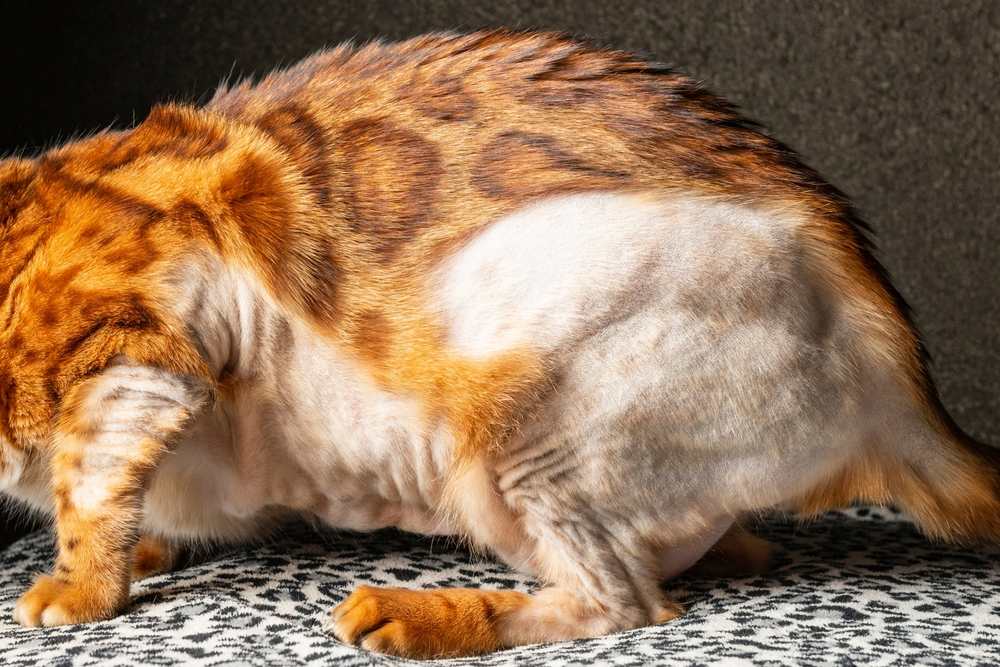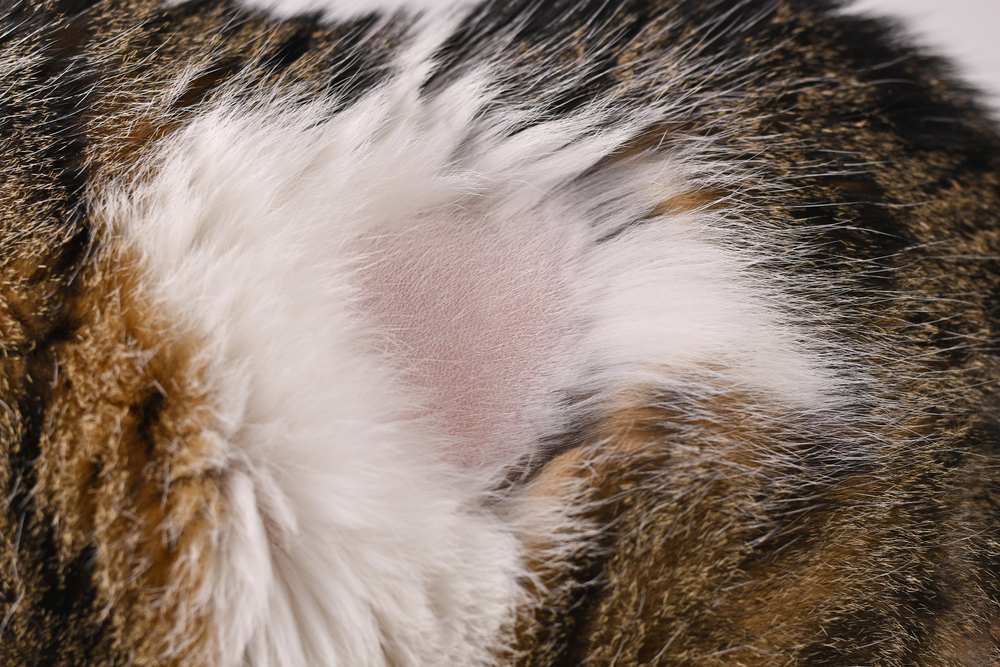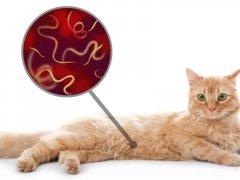
Most cats are constantly shedding some fur and regrowing more. This hair loss leads to all the fur on your furniture and clothing, but it’s normal. However, cats can experience too much hair loss and develop bald spots or areas with thin fur. This abnormal hair loss (also called Alopecia) can be caused by many different health issues, including allergies, fleas, mites, Ringworm, pain, and stress.
We know our cats love to groom themselves; it’s part of their normal behavior and how they keep their skin and coat healthy. However, if they’re itchy, painful, or stressed they can do too much grooming, licking, and scratching and actually cause excessive hair loss and alopecia.
In this article, we’ll go in-depth on hair loss in cats, explaining its causes and how to treat it.
Common Causes of Hair Loss
Cats may overgroom for many reasons, but itching from allergies, fleas or mites, or even allergies to fleas and mites are some of the most common. In summary, the most common causes of hair loss in cats are as follows:
Allergies
Environmental things such as dust, grass, pollen, trees, cotton, or wool, or things in food like chicken, or insect bites can cause allergies in cats.
It’s actually very common for cats to be allergic to flea bites! This is called Flea Allergy Dermatitis and is one of the most common reasons for scratching and hair loss in cats. Cats with this issue can be so allergic that a single flea bite can make them itch and have hair loss for weeks even though you never saw any fleas on them.
Having fleas and mites, even if they’re not allergic to them, can still cause itching and damage to hair and hair follicles, which leads to patchy hair loss. There are several types of mites cats can get, including Mange and Scabies mites.
Stress and Anxiety
Another reason cats commonly over-groom and cause sudden hair loss is stress and anxiety (sometimes called Psychogenic Alopecia).
Cats love routine, and anything that disrupts routines can be stressful for them. Not all cats get along with other cats or other pets, and that can be a source of stress too. Many cats are predisposed to anxiety and stress, which can lead to excessive grooming and hair loss typically on the cats’ back, around the neck or eyes.
Pain
Pain can also cause them to lick excessively and lose hair in the painful area. Most commonly, this happens on the belly due to stomach or abdominal pain, constipation, or even bladder stones, inflammation and pain. Cats may lick too much and cause hair loss over painful joints too.
Ringworm
Ringworm (a fungal infection) is another fairly common cause of hair loss, especially in kittens. This fungus actually damages the hair and the hair follicles causing hair loss. Ringworm can also be itchy and cause cats to lick, chew, and scratch the area. This creates bald spots.
Other Causes of Hair Loss in Cats
There are other less common causes for clumps of hair loss in cats such as auto-immune diseases, thyroid issues (hyperthyroidism), Cushing’s disease (hyperadrenocorticism), hormonal imbalance, and some kinds of cancer. Rarely some older cats can get bald patches on bony areas like their ankles and on their ears as an age-related change. Hair loss in older cats is most likely associated with an underlying medical issue.
When To Be Concerned About Hair Loss

If your cat is losing a significant amount of hair, it may be a symptom of pain, stress, or a health problem. I
Since hair loss is rarely normal in cats, especially if you notice a sudden or significant increase in hair shedding, experience bald patches or if the loss is accompanied by other symptoms like itching or redness on the scalp can also be a symptom of pain or other diseases. It’s important to schedule an appointment with your vet if you notice patches of fur missing or bald spots in your cat.
Diagnosing the Cause of Hair Loss
As a first diagnostic step, your vet will do a thorough physical exam, focusing on the skin and coat and looking for evidence of pain or any fleas.
Your vet will also ask about any other symptoms you might be seeing, like any scratching, head shaking, behavioral changes, vomiting, constipation, diarrhea, or urinary issues.
Mites, bacteria, yeast, and fungi like ringworm, can only be seen with a microscope so your vet will probably recommend checking for these with testing like skin scrapes, cytology, and fungal cultures.
Allergy testing can be done with a blood test or a skin test. Your vet may recommend blood and urine tests as well. Some unusual cases may need additional testing like a skin biopsy or may be referred to a specialist veterinary dermatologist.
Treatment of Hair Loss

The appropriate treatment for your cat’s hair loss will depend on its underlying cause.
Treatment depends on addressing the underlying cause.
Treating Fleas and Mites
Because fleas and mites are such common causes of hair loss in cats, effective treatment for these parasites is an important part of treatment for many cats with hair loss. However, not all flea preventatives are equally effective and not all are also effective against mites. Your vet can help you find the safest and most effective options for your cat.
Treating Allergies
If a food allergy is suspected your vet may recommend a diet trial to eliminate common allergens like chicken. For environmental allergens, there are treatments to reduce the allergic reaction.
Stress
Stress can be treated with environmental modifications to help reduce potential sources of stress, as well as supplements, pheromones, and anxiety medication.
Pain
Pain from the abdomen like pancreatitis, Inflammatory Bowel Disease, constipation, or bladder inflammation is treated with pain medications and treatment of those diseases. Joint pain is treated with anti-inflammatories and other pain medications.
Ringworm
Ringworm is treated with oral and topical medications.
Since most hair loss is due to the skin being itchy, medications to help reduce itching like anti-inflammatories and antihistamines may be used. Your vet may also advise using a plastic cone or shirt to help protect them from further licking or scratching until the underlying issues have been addressed.
In Conclusion
Hair loss in cats is almost never normal and can be due to serious health issues such as allergies, fleas, stress, pain, or ringworm. If you notice any bald spots or areas with shorter or thin hair on your cat, schedule an appointment with your vet so you can figure out what’s going on and treat it.
Also Read: 10 Subtle Signs Your Cat May Be Sick







